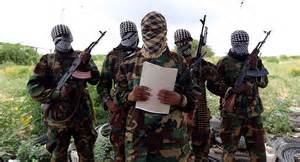By Kyle Herda
Impunity Watch Reporter, Europe
TALLINN, Estonia – Following a tense week featuring NATO and Russia with Ukraine at the center of it all, it seems that a new player has been dragged into the spotlight: Estonia. Both sides seem to be turning focus towards Estonia, Latvia, and Lithuania as things in Ukraine have currently settled in a cease-fire that many are still unsure will hold.

On Friday, the Estonian-Russian border at Luhamaa saw action as Russian soldiers arrested Eston Kohver, an Estonian security officer. Armed men from Russia allegedly crossed the border into Estonia, used smoke bombs and jammed radios in Estonia, and took Kohver at gunpoint with them back into Russia. Kohver has been seen since in Russia being paraded on TV and accused of spying on Russia.
Kohver is a counter-intelligence officer in Kapo, an Estonian agency similar to the FBI in the United States. Until now, Kohver’s job has typically been to keep an eye on smuggling cartels going through the border. Russia’s post-Cold War KGB, now called the Russian Federal Security Service (“FSB”), have claimed that Kohver was arrested in Russian territory with “special equipment for concealed audio recording and documents that bear evidence of an intelligence mission…”
On Wednesday, President Obama traveled to Tallinn to pledge NATO support to Estonia, Latvia, and Lithuania should they be invaded. Citing Article 5 of NATO’s founding treaty, all members must defend any ally that faces a foreign attack. While Ukraine is an ally to NATO, Ukraine is not a full member who shares in this Article 5 protection. Estonia, however, is a NATO member under the protection of Article 5.
Claiming to have been invaded in this capture, however, Estonia remains in a tough position as NATO has not responded militarily and there has yet to be any strong response from its members. Considering that thousands of Russian soldiers and tanks in Ukraine were called an “incursion” rather than an actual invasion, Estonia’s recent incident is likely far from anything NATO would consider an “invasion”.
The current position in Estonia is far from the position that Ukraine is in, but Kohver’s arrest has managed to raise an already-high level of concern in the Baltic region. Latvia, another border-nation of Russia, is also worried about Russia’s recent aggression, and Lithuania has voiced concern as well. Russia’s uses of force this year have yet to be met by NATO or any forces other than Ukraine, and so this may be just another test by Putin to see how far he can get away with.
For more information, please see:
The Guardian – Russia says detained Estonian police officer is a spy – 7 September 2014
The Guardian – Russia parades detained Estonian police officer before TV cameras – 7 September 2014
Time – Russia Is Testing NATO’s Resolve in Eastern Europe – 6 September 2014
International Business Times – Ukraine Crisis: Estonia Intelligence Officer Kidnapped at Gunpoint and Taken to Russia – 5 September 2014



